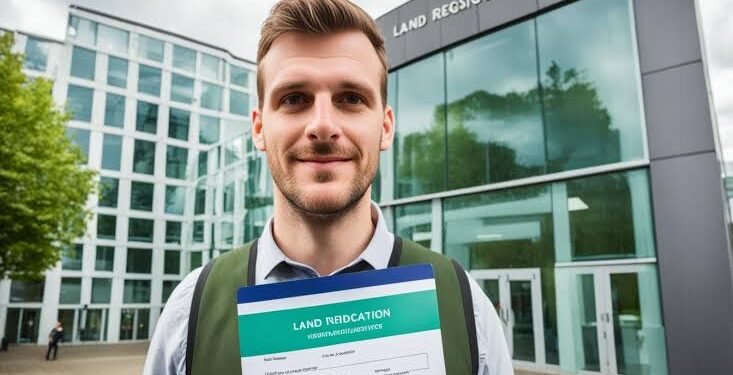Contents
- 1 How to Complete the ID1 Form for HM Land Registry in the UK
- 2 What is the ID1 Form?
- 2.1 Related posts
- 2.2 Global Esports Momentum Drives Investor Optimism as GameSquare Shares Climb on Growth Prospects
- 2.3 Boost Your B2B Sales Pipeline: Book a Free Consultation with Clutch-Recognized SalesAR
- 2.4 How Thinking Errors Hinder Business Growth – And How to Overcome Them
- 2.5 What is Regulatory Arbitrage and How to Avoid Scams
- 2.6 Bridging the Gap Between Workforce Management and Business Efficiency: The Snow Technology Solution
- 2.7 Easy Spray: Your Trusted Partner for Custom Manufacturing in London
- 2.8 Why Transportation Companies Choose Industry-Specific Consultants
- 2.9 Key Steps for Completing the ID1 Form
- 3 Why Is the ID1 Form Necessary?
- 4 Cost of the ID1 Form
- 5 Commonly Asked Questions
- 6 Conclusion
How to Complete the ID1 Form for HM Land Registry in the UK
If you are involved in a property transaction and do not have a solicitor representing you, you will likely need to complete the ID1 form for identity verification purposes. This process is essential to ensure that all parties involved in a property transaction are legitimate, helping to prevent fraud. This is a blog post based on my experience of the process.
What is the ID1 Form?
The ID1 form is a document used by HM Land Registry in the UK to verify the identity of individuals participating in certain property transactions, such as transfers, new leases, mortgages, or first registrations of land.
It is typically required when an individual is unrepresented by a solicitor during these transactions.
So for me, I was doing a transfer of my parent’s property into my own name and didn’t really need a solicitor, I could do all the work myself. However, the Land Registry needed to verify the identity of my parents to be sure they were the people who actually signed the Transfer form. This is where my Notary came in.
ID1 form must be filled out and verified either in person or remotely, depending on the chosen method.
Key Steps for Completing the ID1 Form
- Download the ID1 Form: The form ID1 is available on the GOV.UK website. This form collects personal information such as your full name, date of birth, and current address.
- Provide Identification: To verify your identity, you will need to provide accepted forms of ID, including a passport, UK or EU photocard driving licence, or a biometric residence permit.
- Choose a Verification Method: There are two main ways to complete your ID1 form verification:
- In-person verification: You can visit a solicitor or a notary public to verify your ID in person. Some people search for “solicitor identity verification near me” to find a local service that offers this.
- Remote verification: With advancements, it’s now possible to complete your ID1 form verification remotely through a video call. In this case, you’ll also need to fill out the ID5 form, which accompanies the ID1 form for remote verifications.
- Submit the Form: After verifying your identity, both you and the solicitor must sign the land registry ID1 form. The completed form ID1 land registry can then be submitted alongside any other documents required for the property transaction.
Why Is the ID1 Form Necessary?
The HM Land Registry ID1 form serves a crucial purpose by verifying the identity of individuals involved in property dealings. This ensures transparency and security in property transactions, safeguarding against potential fraud. Whether you’re registering a transfer, new lease, or a mortgage, you’ll need to complete the ID1 land registry form if you are not represented by a solicitor.
Cost of the ID1 Form
The cost of getting the ID1 form verified varies depending on the service you choose:
- Local solicitors may charge several hundred pounds for in-person verification.
- Notaries often charge around £100 for verifying the ID1 form land registry through in person appointments or video calls.
Some people also enquire about ID1 form verification at the post office, but this service is generally handled by solicitors or licensed professionals now. The post office no longer do it.
I used Edward Young Notaries & Lawyers to verify my Form ID1. There service was competitively priced and seamless.
Commonly Asked Questions
- What is the purpose of the ID5 form?
The ID5 form is used when identity verification is completed remotely via video call. It acts as an additional form to the ID1 form land registry UK. - Can I complete the ID1 form myself?
While you can fill out the form, the verification must be done by a solicitor or conveyancer. - How long is the ID1 form valid?
The ID1 form is valid for three months from the date of verification. - Where can I find solicitor identity verification near me?
You can search online for “ID1 form solicitor near me” or use online services that offer remote verification. I used Edward Young Notaries & Lawyers.
Conclusion
Completing the ID1 form land registry UK is a mandatory step in many property transactions, ensuring the security and legitimacy of the parties involved. Whether you choose in-person or remote verification, understanding the process and requirements of the land registry form ID1 is crucial to avoid delays and complications in your property dealings.
following the steps outlined above, you can efficiently complete your ID1 form verification, whether through a local solicitor or an onlineservice offering remote identity checks.
Read more stories at Pr Times Uk.


















